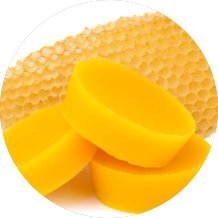Formulation of oil-in-water emulsions begins with the simplest of equations: Emulsion = Emulsifier + oil/wax phase + water phase. Yet as with so many simple concepts, it may not be easy to get the desired result, or to keep it stable. A common problem with emulsions arises when the formulation produces unwelcome “soaping” in manufacture or in use.
In simple terms, soaping is the incorporation of air into an emulsion via exposure to air and agitation. When you rub lotion vigorously onto skin, for example, the thin film of tiny bubbles appears as a white film. In time, the emulsion destabilizes due to evaporation, and the foam breaks up. Even though the initial soaping effect does disappear, it is usually undesirable in lotions and creams.
For many years, formulators understood that silicones, such as dimethicone, imparted a defoaming effect. As the cosmetic market evolves toward greener choices, the use of certain silicones has come increasingly under scrutiny for the environmental consequences in both production and waste streams. Formulators faced with new demands to control soaping without the use of silicones can now use Kester Waxes, plant-derived esters from natural sources. These ester waxes help to control the rest of the emulsion elements which will have a direct influence on the presence of and longevity of soaping.
Bubbles Making Troubles?
In lab studies, we have learned that the emulsifier itself may be the element that is causing the soaping in the formula! A simple way to test this effect is to blend 3-4% of the emulsifier with water, then evaluate the soaping. If the emulsifier alone foams, then it could be very difficult to thwart that effect in your formulations.
Our studies have shown that pure/neat emulsifiers and emulsifier blends tend not to soap on their own, while blends of emulsifier-plus-fatty alcohol (Cetearyl Alcohol is a common component) do tend to soap on their own. It makes some sense to employ the fatty alcohols, given that they are widely available, and may have desirable effects on viscosity and emulsion stability. This may present your lab with a conundrum: How can you avoid soaping while maintaining the texture and stability of your products? The answer is at hand: Koster Keunen’s Kester Waxes offer a variety of formulation benefits, without compromising quality or adding a soaping effect.
Emulsifiers: Innovative Answers with Kester Waxes
Among the alternatives to fatty alcohols we tested, the fatty esters, or ester waxes, brought the best results. The replacement of fatty alcohols with Kester Wax K-48, K-56, and K-59 in multiple finished formulas produced drastic reductions in soaping. Kester Waxes offer other benefits to the formula, such as high, bright opacity, bouncy textures, and quick spreading. And while some may not build viscosity as efficiently as fatty alcohols, minor reformulations yield good results.
Formula#: 5/22-128/286-5
This formulation produces a pleasant, soft cream with delightful bounce and spongy texture. The Cocoa Butter builds viscosity, and brings its signature emollience and creamy feel, and the Kester Wax K-56 prevents soaping, while contributing thickening and a unique texture.
| Ingredient Trade Name | INCI Name | % |
|---|---|---|
| Phase A | ||
| Deionized Water | Aqua | 62.1 |
| Glycerin | Glycerin | 5.0 |
| Keltrol CG-SFT | Xanthan Gum | 0.5 |
| Optiphen | Phenoxyethanol, Caprylyl Glycol | 1.0 |
| Potassium Hydroxide | Potassium Hydroxide | 0.4 |
| Phase B | ||
| Stearic Acid | Stearic Acid | 4.0 |
| Kester Wax K-56 | Cetyl Stearate | 6.0 |
| AR Cocoa Butter | Theobroma Cacao (Cocoa) Seed Butter | 6.0 |
| Jeechem CTG | Caprylic/Capric Triglyceride | 15.0 |
Formula #: 5/15-462/128-2
This lotion formula features the both non-soaping Organic Emulsifying Wax along with Kester Wax K-56 to create pleasant textural properties. It combines a sound formulation with the on-trend appeal of organic and natural ingredients.
| Ingredient Trade Name | INCI Name | % |
|---|---|---|
| Phase A | ||
| Deionized Water | Aqua | 64.3 |
| Quemina 21.257 | Zea Mays (Corn) Starch | 2.0 |
| Glycerin | Glycerin | 10.0 |
| Keltrol CG-SFT3 | Xanthan Gum | 0.5 |
| Optiphen4 | Phenoxyethanol, Caprylyl Glycol | 1.0 |
| Potassium Hydroxide | Potassium Hydroxide | 0.2 |
| Phase B | ||
| Organic Emulsifying Wax | Beeswax, Lecithin, Copernicia Cerifera (Carnauba) Wax | 8.0 |
| Kester Wax K-56 | Cetyl Stearate | 6.0 |
| Sunflower Oil | Helianthus Annuus (Sunflower) Seed Oil | 3.0 |
| Murumuru Butter | Astrocaryum Murumuru Seed Butter | 2.0 |
Leverage Our Expertise to Get the Results You Want
Emulsions, the small oil/wax droplets dispersed evenly into a water phase, and stabilized with an emulsifier, are ubiquitous in cosmetic chemistry. They can be everything from lotions to conditioners and serums. And for each of them, the formula aesthetics can make or break a product’s acceptance. Because changes to emulsifiers or to the oil/wax/emulsifier content of your formula may cause significant changes to viscosity or other aesthetic properties, you may find that you have more questions. Koster Keunen is invested in your success producing effective systems. Contact us for expert consultation regarding maintaining your brand’s signature characteristics, while continuing to meet market demands for environmentally conscious ingredient choices.
About Koster Keunen
Koster Keunen has been working with wax since 1852 and has used our extensive experience and knowledge base to continuously develop new chemistries. Whether you are developing a new product, or need help with a reformulation or replacement, contact us to learn more about how we source, refine or develop waxes so you can create the perfect formula.




